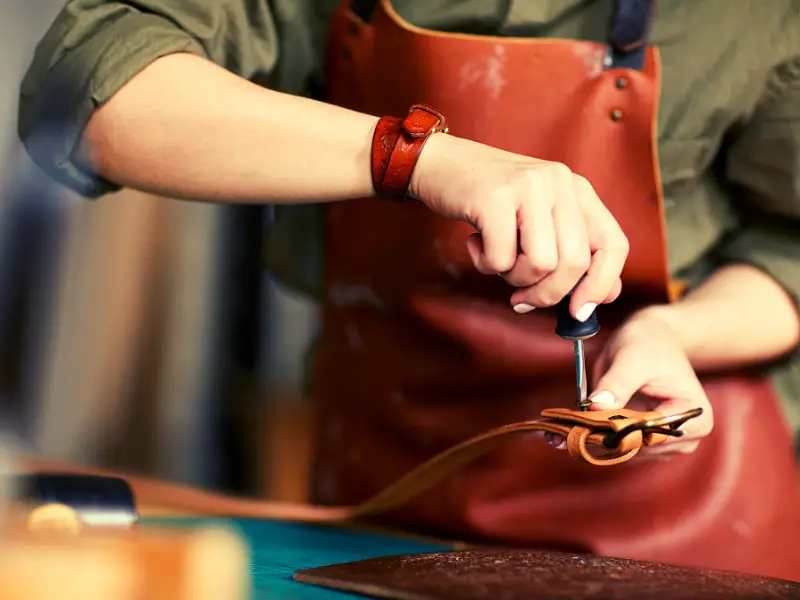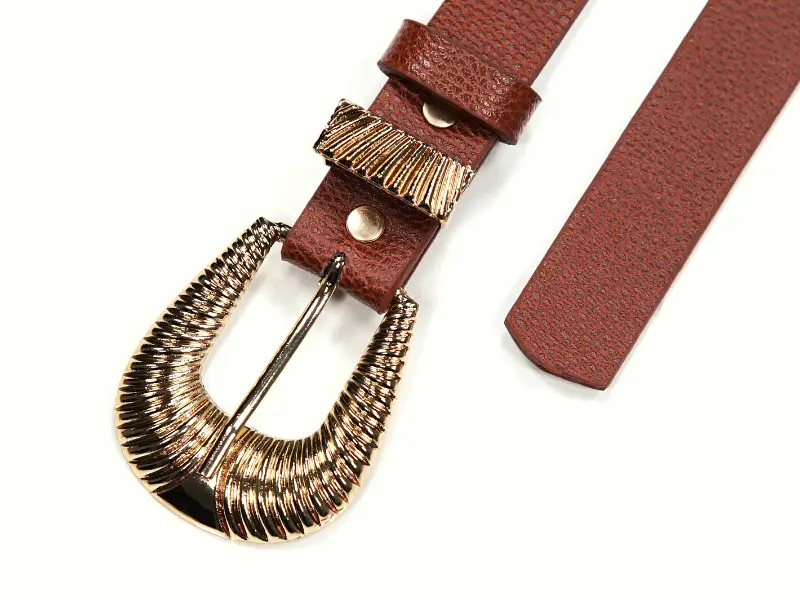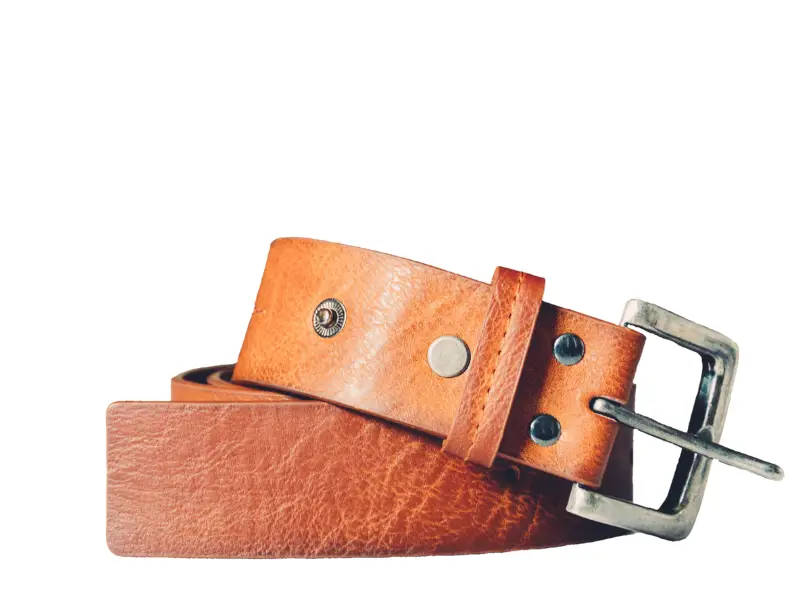While many fashion designers are producing vegan collections, the demand for vegan products on the consumer side is growing. The trendsetting online search engine Lyst shows this in its 2020 Conscious Fashion Report. This represents a 69 percent increase in vegan leather search volume over the last year.
This is a clear sign that consumers overwhelmingly favor alternatives to traditional leather products, such as accessories. These practical and elegant must-haves are particularly trendy: vegan belts.

How Vegan Belts Different From the Others?
Whether it’s vegan belts for men or women, the vital thing to remember is that they are all created to avoid using any animal products. In a broader sense, this applies to leather and other materials such as silk, honey, or mother-of-pearl, among others.
Unlike animal leathers, vegan belts are characterized by being:
- Completely free from animal products such as wool, silk, leather, down, fur, etc.
- Free from animal testing and abuse
- Innovative, transformative, and natural
- Cost-Savy
- Less reliance on chemical inputs in the manufacturing process.
Keeping this in mind, applying beeswax to seal seams or tend for leather is another red flag that classifies non-vegan items. Consumers can always rely on quality seals such as the PETA-Approved Vegan Certificate for authenticity.

Vegan Belts Advantages over Non-vegan Alternatives
The primary advantage is to refrain from cattle farming. Cattle farming is one of the major CO2 emitters on the planet, and it consumes a good deal of water and energy to maintain them. Additionally, around 40% of all killing occurs solely to manufacture leather.
Because vegan labels frequently adopt a holistically conscious approach, production is not only free of animal byproducts but is also environmentally responsible. The concept of circular economy, for example, is concerned with reducing waste as well as energy and water use during the manufacturing process, and more and more companies are adopting this approach.
In many circumstances, the animals and even the people who work with leather suffer. To make ordinary leather and fur more durable, they must be treated with various harmful chemicals, including sulfuric acid. The stages of manufacturing and slaughter are frequently also a source of psychological distress for people.

Several well-known designers strive to develop novel materials for vegan clothes and accessories to safeguard humans and the environment. They push to innovate materials that render the usage of animal products entirely unnecessary.
Alternative leathers manufactured from recycled plastics such as polyester use less water and energy to manufacture, benefiting the environment. Additionally, there are no chemicals used in the manufacturing process with this approach.
Eco-Friendly Materials of Vegan Belts
The most commonly used alternatives are leather imitations made from fruit or vegetable waste, cork, or (recycled) fabrics and plastics, to name a few.
Piñatex
Piñatex is the most well-known brand of faux leather made from fruit waste.
Compared to animal leather manufacturing, pineapple leather, which is created from the fruit’s leaves, is more resource-efficient, pesticide-free, and more energy- and water-efficient in its production.
Vegan Belts Made from Vegetable Waste
MuSkin, a mushroom leather, is the most frequently used vegan leather substitute. This fabric is breathable, tear-resistant, flexible, and water-repellent and is made entirely of natural fibers.
Additionally, it is coated with linen and hemp fibers to boost its longevity and resilience. For example, throughout the value chain of mushroom leather, only natural ingredients are used; and no chemicals are used at all.
Belt Made of Cork
Cork, the bark of the cork oak tree, is a wholly natural substance that is renewable and biodegradable, making it extremely environmentally friendly. Cork is also a natural product that is entirely recyclable. Cork oaks absorb three to five times the CO2 produced by an unpeeled tree, which encourages industrial and environmental sustainability.
Furthermore, cork products are lightweight and elastic despite their toughness, making them an excellent choice as the foundation for a cork belt. Another advantage is that the natural grain of the cork leather allows for the creation of unique color combinations and patterns, which result in one-of-a-kind pieces.
Plastic Belt
While they frequently blamed synthetic fibers for harming the environment during their manufacturing process, they can be recycled or upcycled in an environmentally friendly way. For example, for polyester, commonly used in the fashion sector, it is possible to upgrade it with the least amount of water, energy, and trash. Because of its flexibility and durability, recycled polyester is an excellent choice for use as a base for a vegan belt.
Vegan Cactus Leather
Innovators in the textile business are using organic plant-based materials to create long-lasting, low-impact alternatives to leather that are becoming more popular than ever. Cactus Leather by Desserto is a sustainable and environmentally friendly substitute for animal leather that is also partially biodegradable. It is grown and manufactured in Mexico and is available in various colors.
Cacti are a vast source of sustainable material for a vegan leather belt. Because cacti can survive and bloom in arid environments, there is no need for irrigation infrastructure, resulting in a huge reduction in the consumption of natural resources and water. Desserto is a brand created without using hazardous chemicals, phthalates, or PVC, and it has a ten-year shelf life when properly stored.
Vegan Belts Function, Aesthetics, and Price
Animal-friendly accessories are functionally and aesthetically identical to their conventional alternatives. They are durable, resistant to abrasion, waterproof, and long-lasting. Many patterns are available because of the abundance of leather alternatives and vegan textiles.

Vegan belts, vegan bags, vegan shoes, and vegan wallets, produced from faux leather alternatives, can be just as timeless and high quality as their animal leather counterparts. Furthermore, linen, cotton, or hemp jeans can pick up on trends and produce them in any savvy style.
Purchasing vegan belts also offers financial benefits. When compared to animal leather goods, animal-friendly alternatives made from vegan material are frequently less expensive. But, if an invention or a complex upcycling method is used to create the piece, the price may be slightly higher.
Conclusion
Vegan belts are a popular fashion accessory. Vegan leather or synthetic alternatives mostly make up vegan leather, whereas cork and recycled materials are more commonly seen on a vegan belt. The idea of a vegan belt has arisen from the groundbreaking work done by vegan leather alternatives that are becoming more widely available to the public.
Vegan belts provide an alternative for those opposed to or uncomfortable with wearing animal products. The advances in technology, particularly synthetic materials and recycled fabrics, have made it possible for vegan belts to be manufactured in this way.
Sustainability and the importance of environmental conservation cannot be overstated. We’ve put together a list of informative guides below to help you live a more sustainable lifestyle.


I wanted to thank you for this good read!! I absolutely loved every little bit ofit. I have you bookmarked to look at new stuff you post.